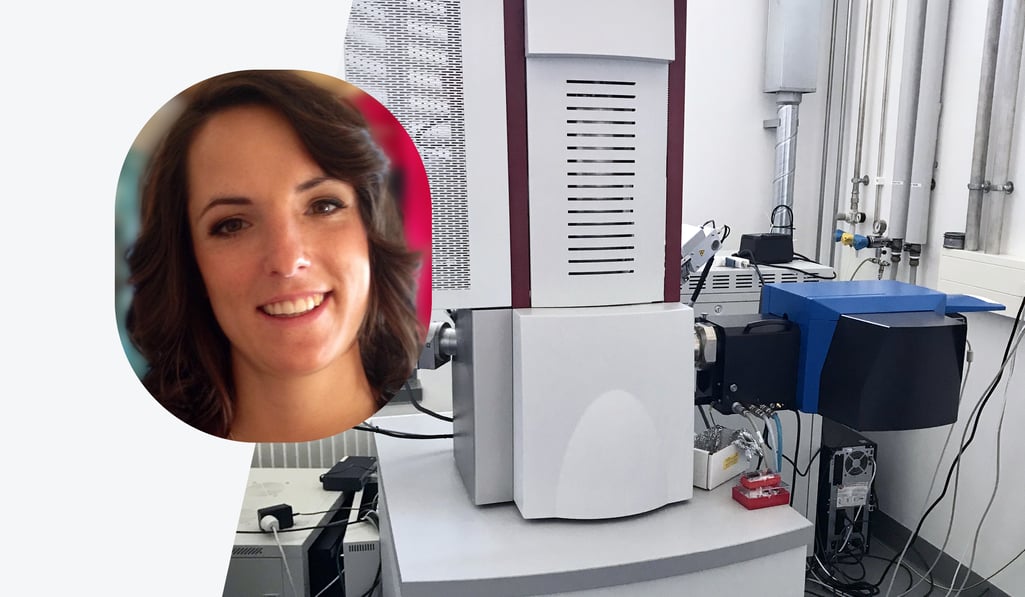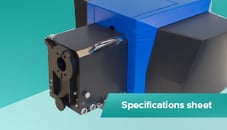-
Life Sciences
.png)
Our solutions
-
Materials Analysis
.png)
Our solutions
Techniques
Applications
- Why Delmic?
-
Insights
.png)
Insights
-
Company
.png)
Company
Materials science
Investigating plasmonic and dielectric nanostructures with cathodoluminescence

Dr. Saskia Fiedler is a Postdoc at SDU (University of Southern Denmark) Nano Optics and The Mads Clausen Institute. Her research is focused on electron beam-based spectroscopy, namely cathodoluminescence (CL) and electron energy loss spectroscopy (EELS), of plasmonic and dielectric nanostructures. Such nanostructures have a great potential for a large variety of applications such as nanoscale sensing, spontaneous emission control, local heating, and color filtering. So how does Dr. Fiedler use the cathodoluminescence technique and how does it contribute to an understanding of these extremely small systems?
Dr. Fiedler is originally from Berlin, Germany but she has been living in many other countries throughout her life. Her current journey and passion for cathodoluminescence started from traveling in a camper van across Australia for 7 months, which made her fall in love with the country and the lifestyle. So, Dr. Fiedler decided to stay for another 3,5 years to do her PhD at the University of Technology Sydney in nanophotonics. Subsequently, the extensive cathodoluminescence experience from her work at UTS helped her to get a postdoc position in a prestigious nano optics group at the University of Southern Denmark. Next to physics, her biggest passion is dressage. Other than that, Dr. Fiedler enjoys lots of different sports such as badminton, scuba diving, weightlifting, hiking, boxing.
So what is her research focused on? Dr. Fiedler is taking advantage of the up to sub-nanometer spatial resolution in combination with a high spectral resolution, which allows for correlation of the morphology with the spectral response of the sample under investigation. Among the different techniques that she is using are additional conventional optics such as photoluminescence, dark-field scattering, and Raman spectroscopy. On a day-to-day basis, she is performing an extensive experimental investigation of different types of materials, such as metallic and dielectric nanostructures, 2D-material stacks, and single photon emitters in nanodiamonds, which is complemented by in-depth theoretical calculations performed by her colleagues.
One of the systems that she is using to perform these experiments is the SPARC Spectral cathodoluminescence detection system. Cathodoluminescence measurements are essential to study nanostructures at the true nanoscale. The SPARC Spectral system allows her to investigate, for example, the mode distribution of plasmonic and Mie resonances in single metallic and dielectric nanoparticles, respectively.
One of the recent studies by Dr. Fiedler and her group focused on metallic nanoparticles and dark plasmonic modes, which have interesting properties, including longer lifetimes and narrower linewidths than their radiative counterpart, and little to no radiative losses. With various microscopy techniques, including CL, her group was able to demonstrate that optically dark plasmonic modes in single gold nanodisks can be mapped out by electron beam excitation and their visibility can be increased by taking advantage of substrate effects (read the paper here).
Another research that included the use of the SPARC Spectral system focused on the electron beam excitation of transition metal dichalcogenides (TMDC) monolayers encapsulated in hexagonal boron nitride (hBN), where giant photon bunching was observed. For this, Dr. Fiedler and her group extended the system with a g(2) setup to investigate (anti-) bunching effects.
When asked about how Delmic SPARC Spectral was chosen among other CL systems, Dr. Fiedler says that it was Delmic’s scientific background that convinced her:
It was very reassuring to know that the SPARC system was developed by a trusted and esteemed colleague in our field, rather than being some general-purpose solution in material science.
Dr. Fiedler also mentions that she feels happy with the Delmic service team.
Technicians have been easy to get in touch with, knowledgeable and fast. The support and help by the application specialists were outstanding – they were very helpful in discussing ideas and design possibilities to further expand our CL capabilities.
Dr. Fiedler keeps working on exciting new projects and is currently waiting for another research paper to be published.




